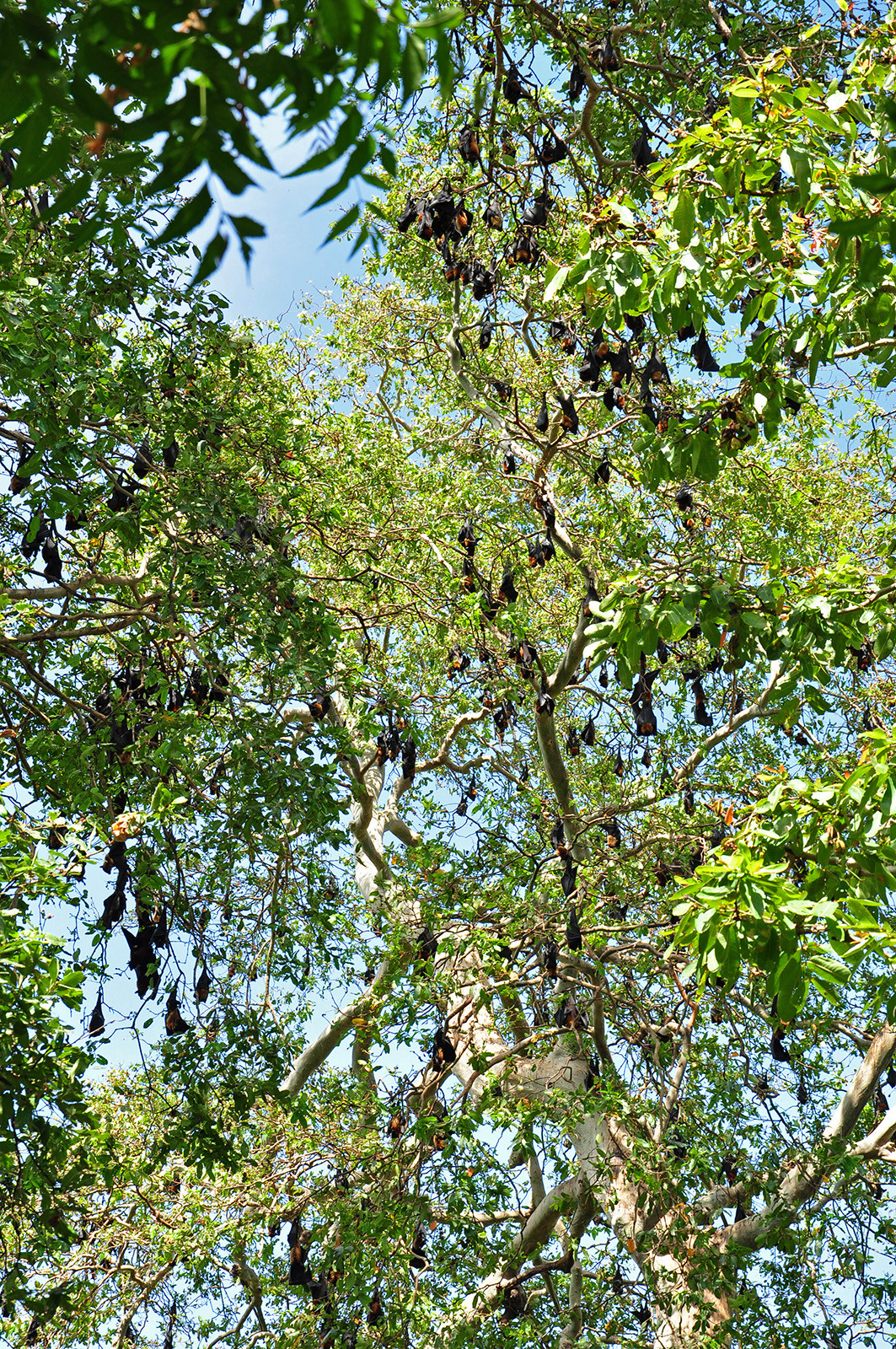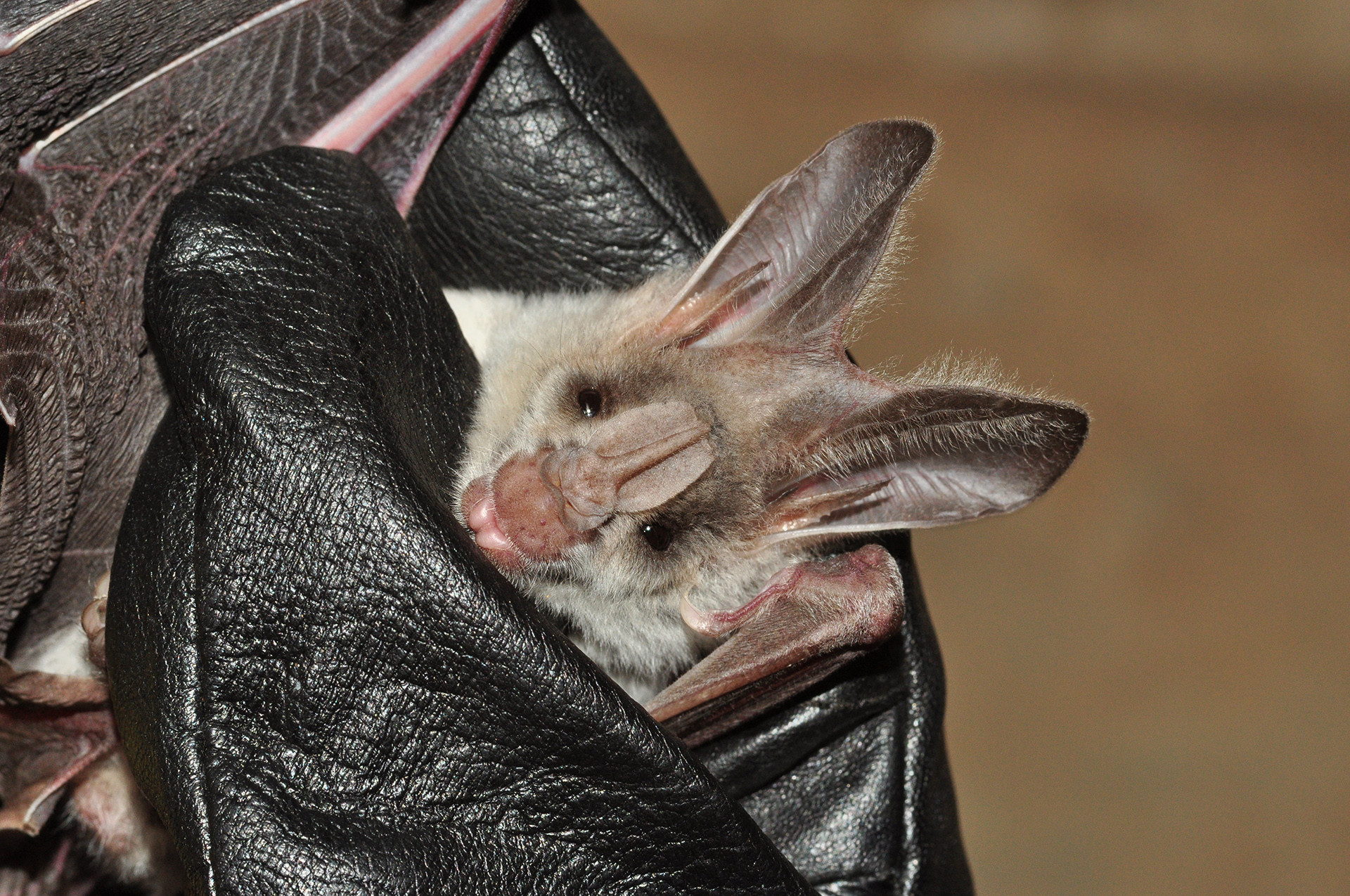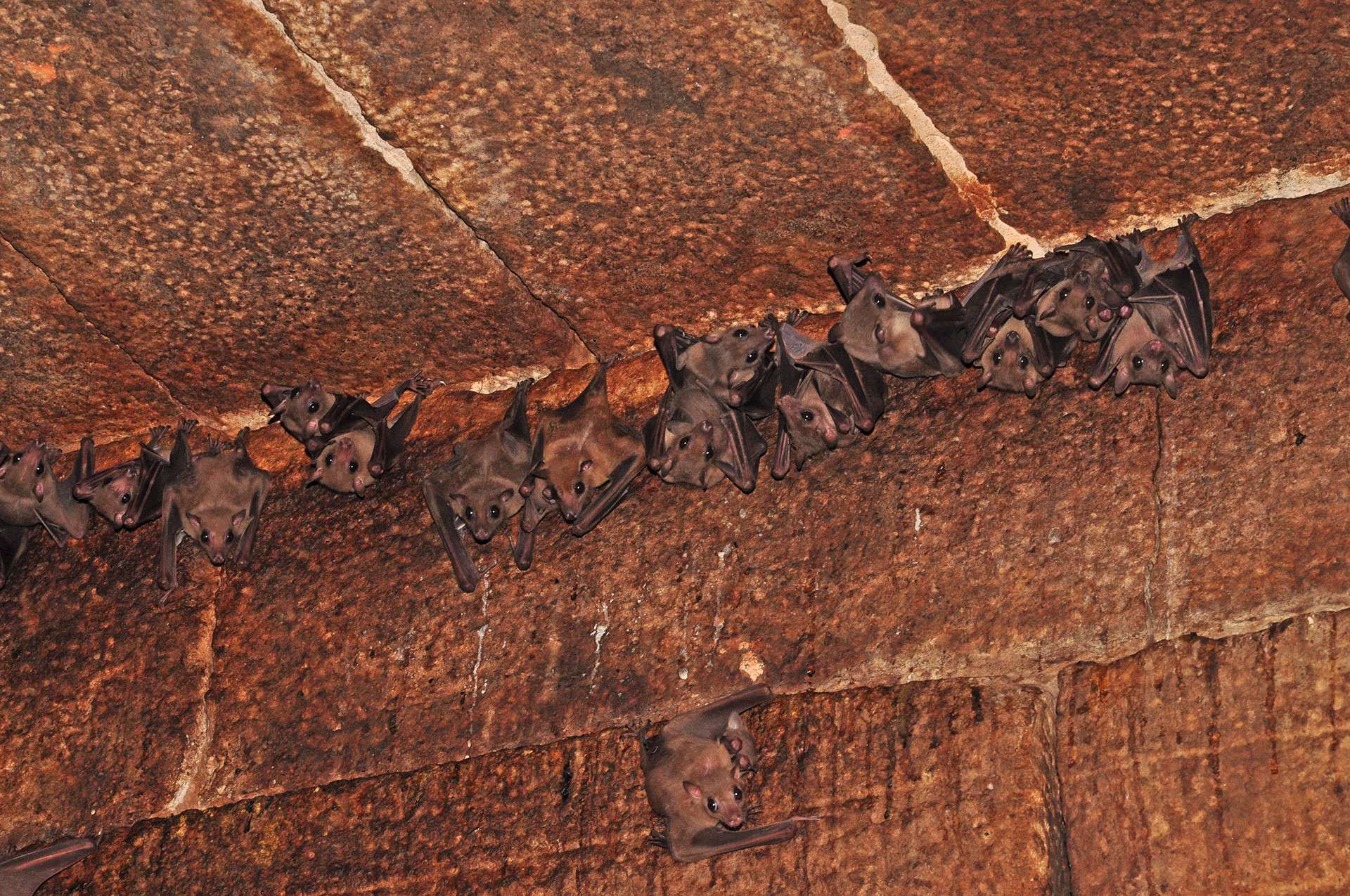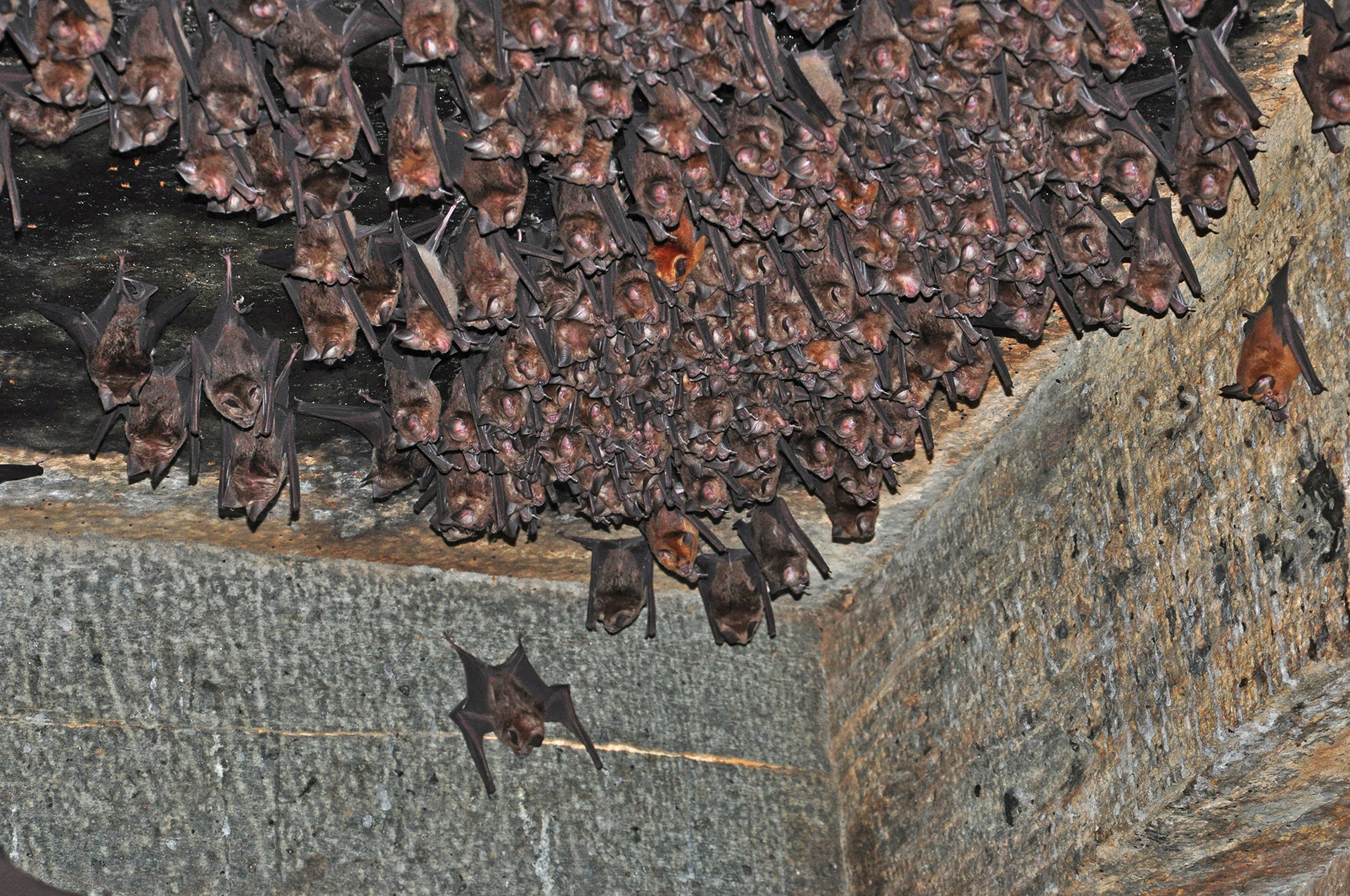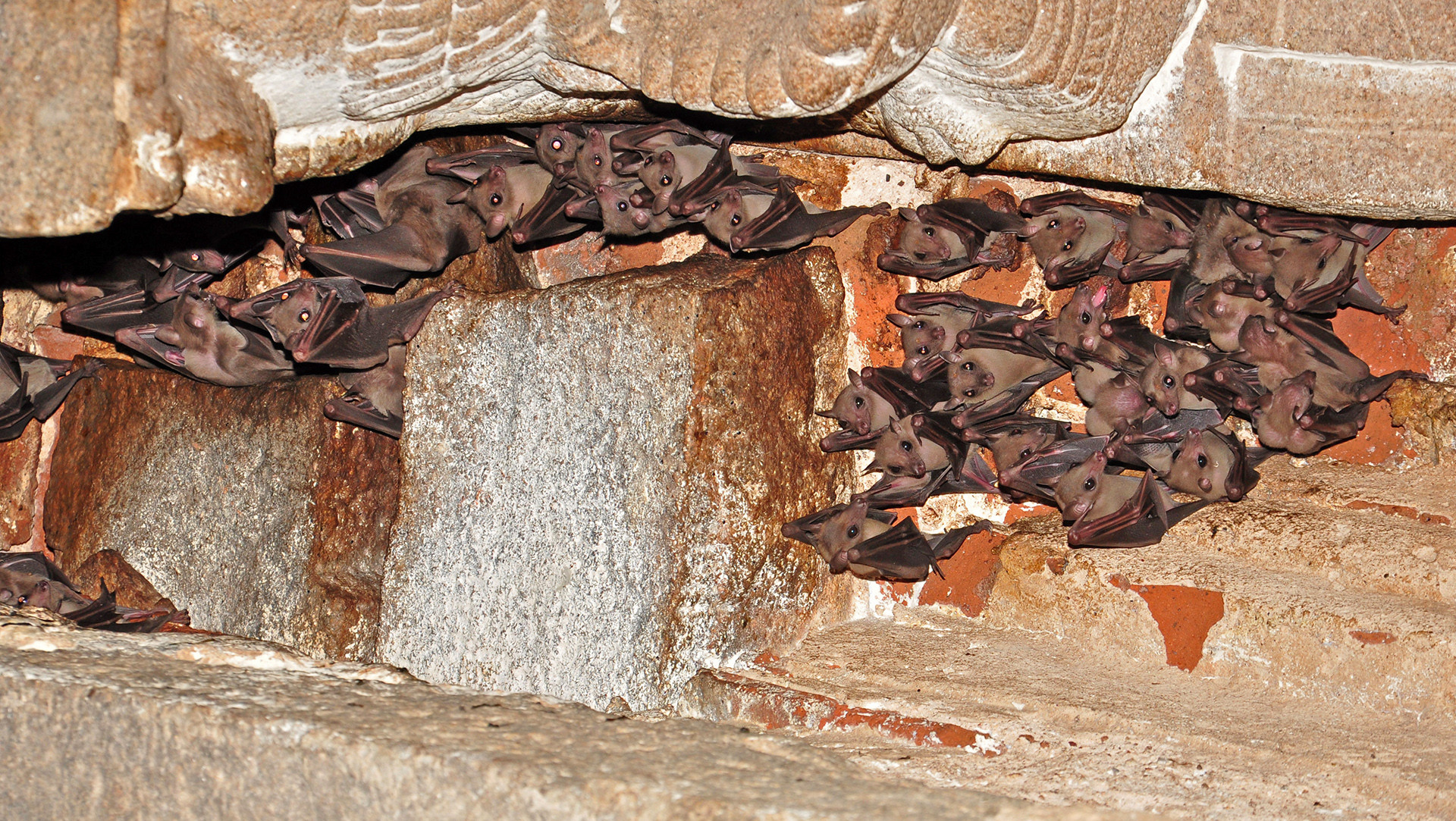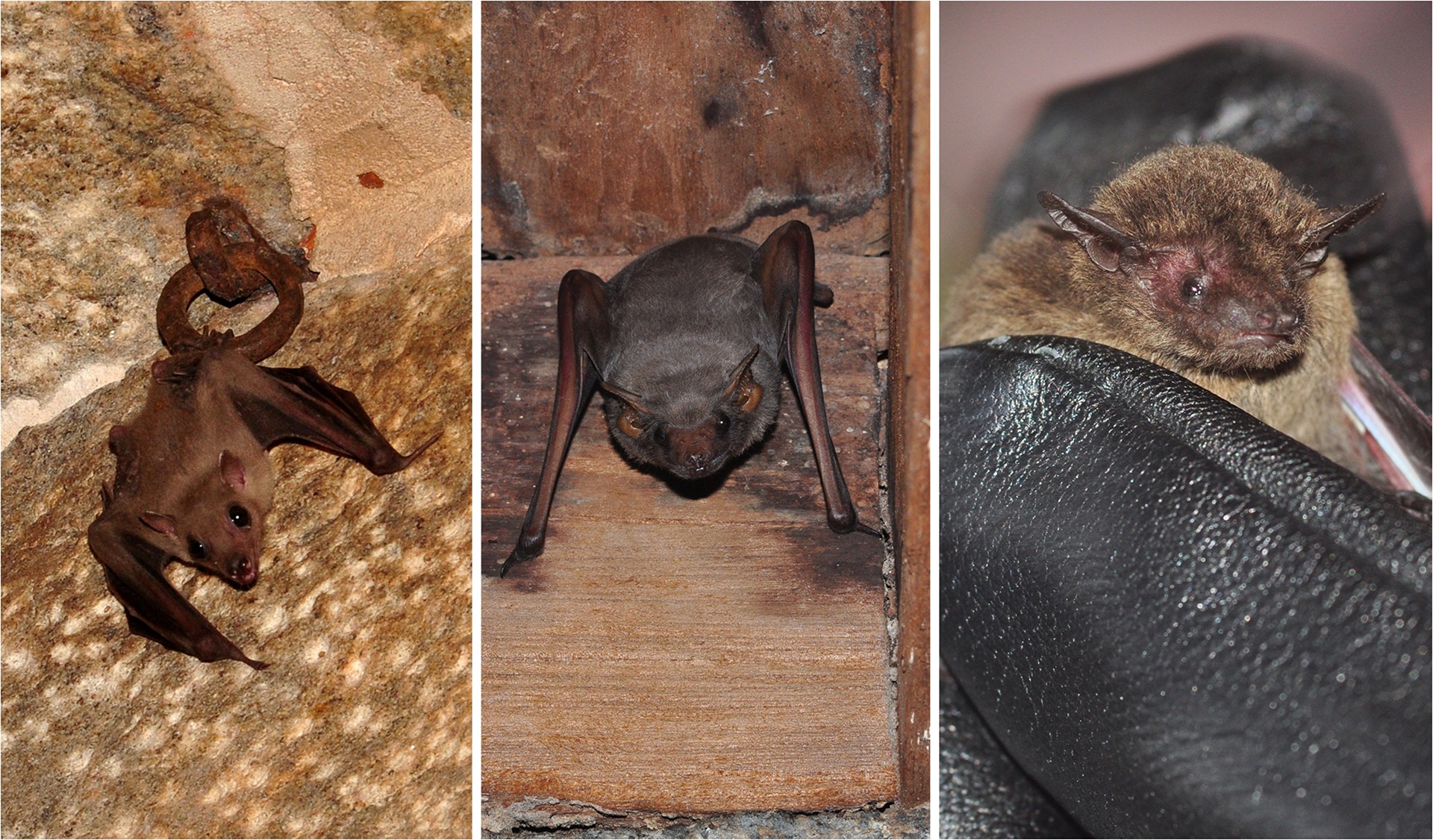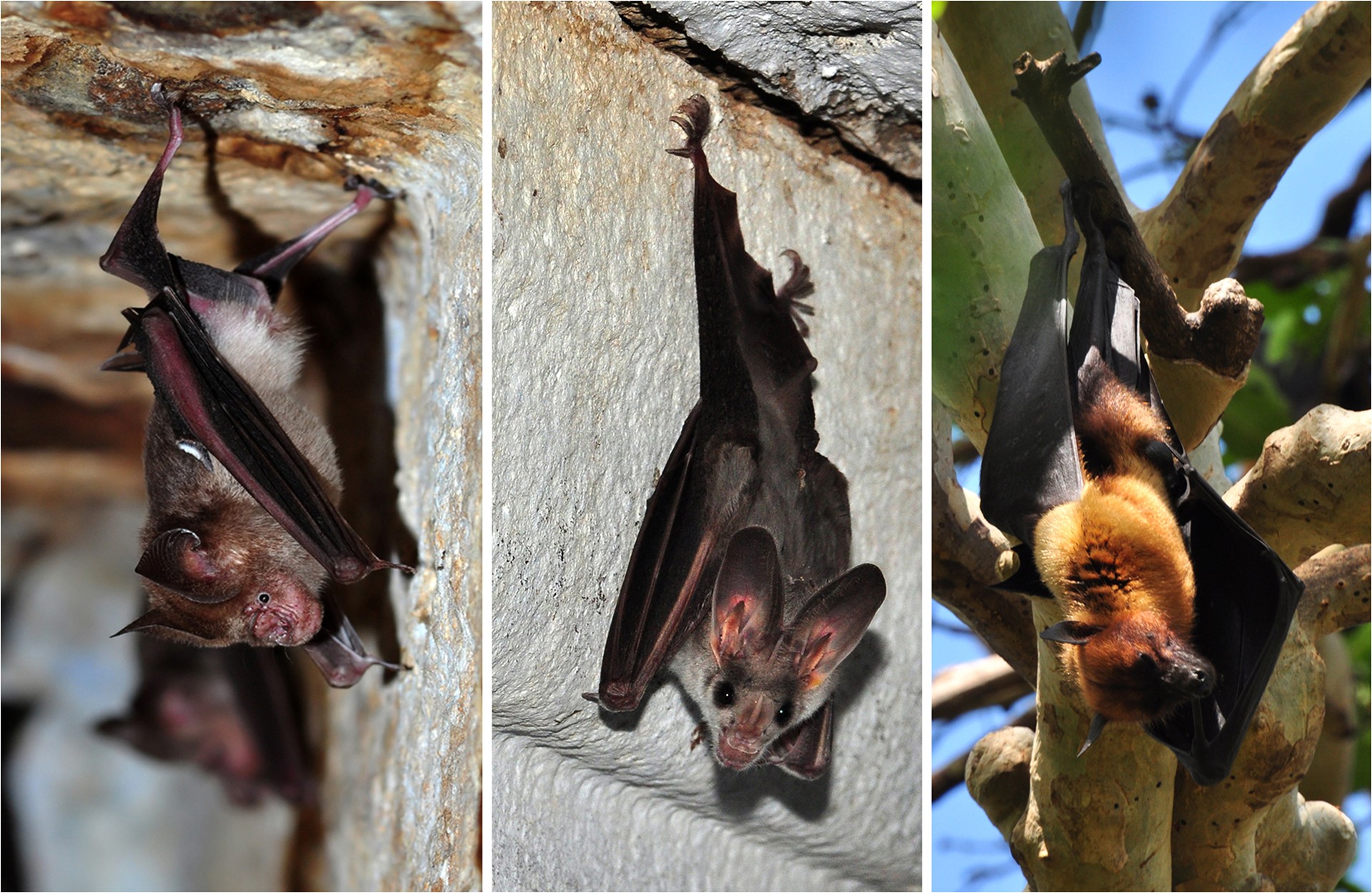A shrill and incessant screeching got me out of bed one early winter morning, 12 years ago. Stepping out to the balcony in my home in Bangalore, I noticed that a pair of Jungle Crows had pinned a bat down. Presumably, they had shaken it off its day-roost on a tall Champak (Michelia champaka) tree just outside. The crows steered clear of a nasty bite as the unlucky bat fought for its life and eventually fell silent.
Almost a decade later, I crossed paths with bats again. This time, I was studying frogs in the Kalakad Mundanthurai Tiger Reserve (KMTR), a renowned biodiversity hotspot and a lifeline to the arid plains of southern Tamil Nadu.
The River Thamirabarani, originating from these mountains, sustains several thousand acres of rice paddy agriculture as it flows out to the Bay of Bengal. Its entire length is dotted with temple complexes that are anywhere between 500–1000 years old. A typical example would be the Vaidyanathasamy temple housing a Shiva deity in the town of Cheranmahadevi, built in 1300 AD. In this region, there are 2-3 temples in every village, and in the typical south Indian style, most have a temple tower that is visible from a few kilometres away.
Mathivannan M and Dr. Ganesh T, two researchers from the Ashoka Trust for Research in Ecology and the Environment (ATREE) in Bangalore were starting a study to document the diversity of bats in the foothills of KMTR. (They are currently working on publishing a paper about their findings.) I decided to take a break from frogs and joined their team. Would we find any bats at all? How many species would we find? And how would we get close enough to identify them? These were some questions in our minds as we set off at dusk, looking for temples. We did not have to go far. Our very first visit was to the Subramaniasamy temple in Kallidaikurichi, where we spotted two species: the Greater False Vampire Bat (Megaderma lyra) and Schneider’s Roundleaf Bat (Hipposideros speoris).
After meeting the chief priest and seeking his permission, we went around the temple complex, listening for bats and sniffing around dark dingy corners for bat excreta. Bat excreta, often the size of rat pellets, is known as ‘guano’ and has a distinct foul smell that is hard to miss.
In this way, whenever we would find some evidence of bats, we would make our way into old disused parts of the temple complexes. Armed with a headlamp and a camera, we took pictures and used them for identification and to help us estimate the populations. For many species, we could not rely on photos alone to identify them, we also had to measure body parts such as wingspan or limbs. An old mist net came in handy. Using a pair of thick leather gloves, we extracted bats caught in the net and took measurements and photos before releasing them. Many bats produce high-frequency sounds that are inaudible to us humans, and like sonar, they hear the echo of sounds and ‘see’ their surroundings. Leaf-nosed Bats are thought to use the leaf-shaped structures on their noses to direct sound in particular directions. Over six months, Mathivannan and Ganesh documented the presence of bats in only 32 of the 62 temple complexes that were surveyed.
Why do temples attract bats?
In an authoritative account, Bats of the Indian Subcontinent (1997), Bates and Harrison describe how many fruit-eating and insectivorous bats roost in anthropogenic structures like temples across tropical Asia. Unlike most other structures, temples have been around for a fairly long time and have numerous dark, musty and disused corners. The high ceilings and the stone walls provide a damp and cool place that makes an ideal bat roost. If not for these temple towers, bats would likely roost in naturally occurring caves or among cliffs. I wonder if our ancestors knew the importance of bats, and temple structures were designed to accommodate them. We may never know. Engravings of wildlife such as the lion, tiger, snake, fish and langur, apart from other mythical animal forms, certainly illustrate the ethos of tolerance that is central to Hinduism.
But today, we want our gods and stone idols to live in the same comfort that we enjoy. Many temples are now air-conditioned. Electric light bulbs have replaced oil lamps, eliminating all the dark areas. Rock surfaces have been painted and plastered to look clean. The smooth walls no longer provide ledges on which bats can roost during the day. Many of the temples we surveyed were modernised and bats were nowhere to be found.
A recent study has found that even eco-friendly LED lights impair movement in slow bats such as Rhinolopus, Hipposideros and Myotis spp., all of which we saw in the temples we visited. Often, the most devastating changes happen when temples are structurally renovated. The entrance into the temple tower is often blocked with fine mesh, or brick and mortar construction to seal access to bats forever. The more temples we visited, the increasing levels of cruelty we saw. In one of the temples we visited near Ambasamudram, the priest told us how they managed to get rid of bats. They had doused the walls of a disused room with a mysterious oily liquid and set fire to it before closing the door. As a result, all the bats roosting inside were trapped and were charred. We could smell the burnt flesh even after a week.
Even today, Mathivannan is saddened when he remembers how at least 10,000 flying foxes were evicted from a temple complex when their roosting tree was chopped down. The bats flew away, never to return. But all is not lost. “While the renovations cannot be prevented, we are working towards minimising the impact of such activities. Education is the key to protecting India’s temple bats,” he said. He currently manages the Agasthyamalai community-based conservation center near KMTR and is elated because many temple officials have enthusiastically come forward seeking advice on how to conserve bats in temples.
Mathivannan, who is from the region, certainly has an edge in conservation because people trust him. Over the last five years, he has talked with temple authorities and conducted outreach activities focused on increasing awareness about bats. He encourages them to leave the bats be, and allow them to coexist in these spaces, just as they have for hundreds of years.
Interventions like the installation of ‘bat houses’, similar to bird nest boxes, within the temple complexes can provide a safe nursery for bats. Although none of the bats we detected in temples were endangered, they are bound to be threatened if suitable roosting habitats continue to be modified.
Why do we dislike bats?
Bats are feared because people believe they carry diseases. Indeed, bats can be reservoirs of diseases, and with the global COVID-19 pandemic sending almost the entire world into lockdown, our prejudice against bats has re-emerged. Some studies investigating the origin of the disease have pointed fingers towards bats, without concrete evidence. Diseases such as the COVID-19, SARS, MERS, and Ebola are what we call ‘zoonotic’ or ‘emerging’ infectious diseases. To assuage our fear of bats during these stressful times, Rohit Chakravarty, a graduate student studying bat ecology at the Leibniz Institute for Zoo and Wildlife Research, Germany says, "Many species of bats have lived alongside humans, and in fact, thrived in human-modified habitats. For example, every second house in my neighbourhood in Nagpur has small insectivorous bats such as the Pipistrelles hiding somewhere in cracks, crevices or, in pipelines. We've always lived with bats and have largely been disease-free. Our most familiar species, the Indian Flying Fox is a reservoir of the Nipah virus. Other species of flying foxes and related species are reservoirs of Hendra virus, Marburg virus, and probably Ebola in Australia and Africa respectively. Nipah is known to transmit through contaminated fruits and plant sap. To co-exist with flying foxes, we simply need to follow basic hygiene rules, including but not limited to not eating fallen fruits and probably also keep pets away from flying fox roosts."
Many of the diseases live in their hosts, causing little or no symptoms but can be dangerous when they spill-over to humans often via an intermediate species (Pangolins are thought to be the intermediate species in the case of the COVID-19). It is evident that for a spill-over to occur, the integrity of the ecosystem where the disease emerges has been compromised. This happens from shrinking natural habitats as humans make in-roads in the name of development or from rampant wildlife trade, where live animals are transported and kept in inhumane and unhygienic conditions. Unfortunately for bats, the blame, far too often, falls on them.
It appears that our ignorance has a large role to play. “Most people do not know much about bats, and if they claim they know something, it often turns out to be a myth. Many think bats suck blood or attack our eyes or are a bad omen if they enter our homes,” said Rajesh Puttaswamaiah, a lawyer-turned-conservationist based in Bangalore. “While such ignorance is understandable for a common person, the challenge is that policymakers, forest officers, and even seasoned naturalists do not know much about bats either,” he pointed out. Rajesh has been instrumental in setting up the Bat Conservation India Trust, an NGO established in 2014, through which he hopes to facilitate research and spread awareness among diverse stakeholders to effectively conserve bats in India.
Bats are beneficial for the environment
The intricate connection that bats have with human societies should be impossible to ignore, yet somehow, we tend to overlook it. In fact, their ecosystem services – pollination and pest control – are incredibly important. In a review published in 1993, Dr. S. Subramanya and TR Radhamani highlighted the pollination services provided by fruit bats like Leschenault’s Rousette (Rousettus leschenaultii), Greater Short-nosed Fruit Bat (Cynopterus sphinx) and Indian Flying Fox (Pteropus medius), which visit over 20 plants that are of commercial importance. Studies have also shown how fruit-eating bats provide important pollination services when they come to flowers and drink nectar.
The very survival of forests, in fact, depends on bats. Narrating an incident from 1994, Dr Ganesh, a senior fellow at ATREE, recalled: “Bats were abundant that year, during the mass fruiting of Palaquium ellipticum trees in the Kakachi area of the Kalakad Mundanthurai Tiger Reserve. They could be seen flying away from small bushes as you walked through the forest.” The Lesser Short-nosed Fruit Bat (Cynopterus brachyotis) must have been tracking resources and had congregated in the forests near Kakachi. In the thirty years that the researchers had been monitoring the flowering and fruiting cycles of evergreen trees in KMTR, they had never seen this kind of an incidence of mass fruiting, and nor have they observed bats in such large numbers since.
When colonies of bats feed during the fruiting season, they often sally into a tree, grab a fruit and fly to a nearby tree to feed at leisure. Once the pulp is eaten, they drop the seed before going to get another fruit. Such roosts are known as temporary roosts and one will always see a small heap of seeds below them. In this way, bats effectively disperse seeds of trees like the Palaquium ellipticum. Without pollination, the trees would not produce seeds, and if the seeds were not dispersed, the young saplings germinating below the parent tree would die of competition.
Other insectivorous bats like the Indian Pipistrelle (Pipistrellus coromandra) and Schneider’s Roundleaf Bat (Hipposideros speoris) are known to feed on insect pests. If these bats were to hypothetically stop eating insects, insect numbers would increase and eat up all the leaves in a forest. In effect, the survival of the forest would become extremely difficult.
The same applies to plants outside forests, too. In the temples we visited, we saw seeds of the Neem tree strewn inside temple complexes, mirroring the shape of stone beams holding up the roofs, on which bats roost when feeding.
In our pursuit of comfort, we have forgotten that humanity cannot survive in isolation. Creating awareness and sensitising stakeholders such as the local forest department and archeology department staff, temple authorities, pilgrims and other visitors to the temple is an important task. To ensure their protection, perhaps it is time we created a bat deity similar to the elephants, monkeys and snakes that have found a place within Hindu mythology. Wildlife has continued to persist in India despite the burgeoning population, and the cultural reverence of animals has often been attributed as a reason for this tolerance.
At the very least, we ought to take the dictum ‘Ahimsa Paramo Dharma’ (non-violence is the ultimate duty) seriously and stop persecuting bats just because they are mysterious and we fear them, or that we cannot tolerate the smell of their excreta. Surely, we would all be hypocrites if we adored Batman comics and movies but did nothing to ensure the survival of bats. We probably are all hypocrites already. But this can change. It won’t be through the efforts of any god, mythical or otherwise, residing in a temple or a caped crusader. It has to be all of us.
References:
Subramanya S and Radhamani TR. 1993. Pollination by Birds and Bats. Current Science, 65 (3): 201-209.
Emma L. Stone, Gareth Jones, Stephen Harris. 2012. Conserving energy at a cost to biodiversity? Impacts of LED lighting on bats. Global Change Ecology. 18 (8): 2458-2465.

